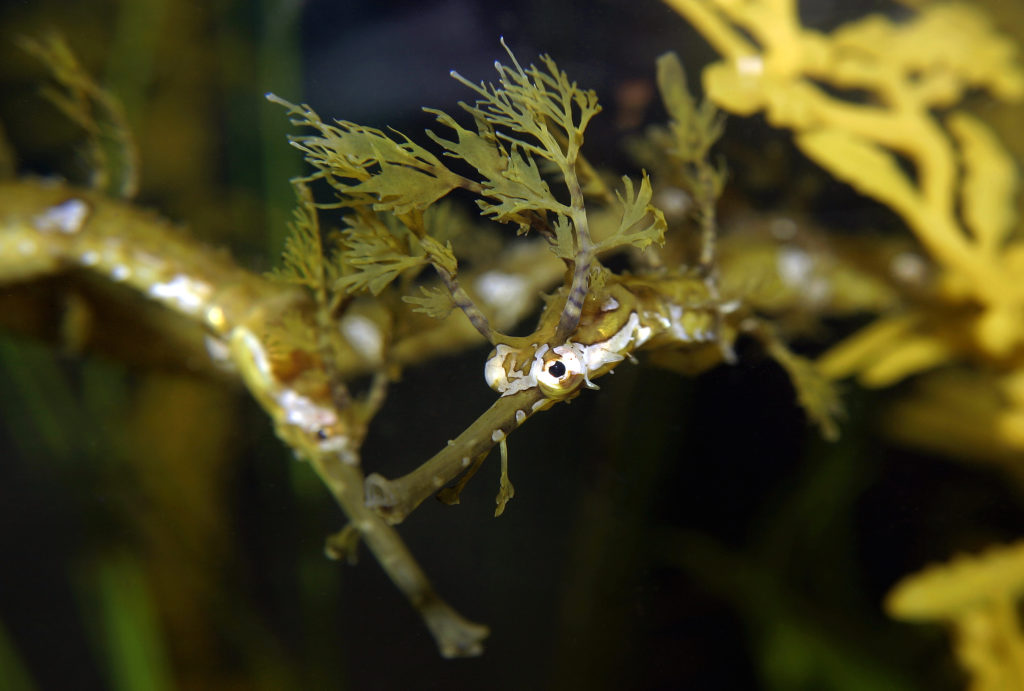Seadragons are known for their elaborate appendages that help them blend in with their kelp and algae habitats. But an evolutionary tree based on molecular data showed that one of the three species was a faker. The two southern species, the leafy and weedy seadragons, were shown to be each other’s closest relatives. But the tropical ribboned seadragon was more like a distant cousin, and was just dressed in a similarly camouflaged suit. This is probably because it lives in a similar habitat, so the suit works to hide the animals in both tropical and southern Australia. But it sure fooled some people!
Using molecular clock techniques, the study also showed that the appearance of the true seadragons happened near the late Miocene, at a similar time to other animals that are associated with kelp. Kelp first appeared in the fossil record in the early Miocene, and is thought to have diversified in the late Miocene (about 5-11 million years ago). So the evolution of the seadragon’s leafy appendages is most likely linked to staying hidden kelp habitats. In the same way, the upright posture of sea horses is thought to have developed at a time when seagrass habitats expanded in the Indo-West Pacific. Developing the right costume for the habitat you live in sure helps survival. Don’t we all experiment with fashion until we fit in?!
Are you the author of this article? We had a site crash back in 2016 and lost some author attributions. We promise this is not a snub! Please email us and let us know that this is your post. Thanks and apologies!


